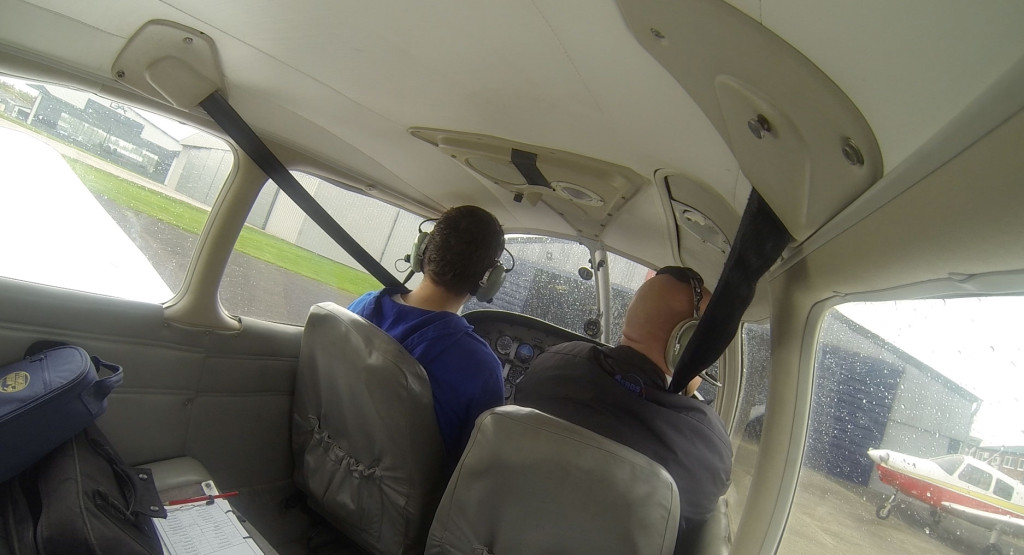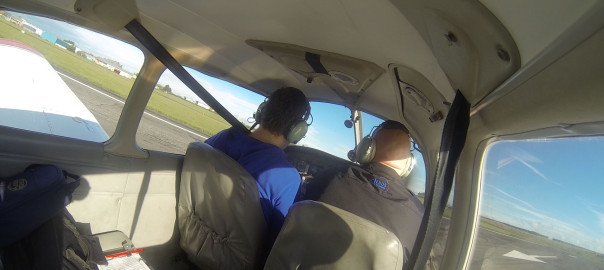The weather was better than last lesson – a mixture of sun and clouds, but still with lots of wind. The clouds were fairly low at around 2000ft so not enough room for exercise 10B (stalling part two), which needs at least 3000ft AGL. So, this lesson would be more circuits, following on from last lesson. Despite the talk about wind drift last lesson, we didn’t pay much attention to it during the actual lesson, so this lesson we would focus more on wind correction, aiming to have much more circuit-like (90,90,90,90) GPS tracks. As you can see from last lesson’s tracks, the cross-wind and base legs were at more like 45 degrees rather than 90, due to the wind.
After a check of the aircraft, we were taxying to the runway. Runway 22 was active today, with a right-hand circuit. ATIS reported wind from 190 degrees at 15 knots. We can calculate the approximate headings using the max drift calculation…
Without any wind, we’d fly:
- Takeoff: 220 degrees (runway heading)
- Crosswind: 310 degrees (+90)
- Downwind: 040 degrees (+90)
- Base: 130 degrees (+90)
- Final: 220 degrees (+90, back on the runway heading)
To make calculations easier, lets assume we’re travelling with an air speed of 90 knots.
Max drift = (60 / 90) * 15 = 10 degrees
Whilst flying crosswind, wind will be hitting us from (310 – 190) /2 = 60 degrees to our left, blowing us right. Using the clock code, this tells us to apply max drift.
Whilst downwind, wind will be hitting us from 30 degrees to our right , blowing us left. Using the clock code, this tells us to apply half the maximum drift.
Whilst flying base, will will be hitting us from 60 degrees to out right, blowing us left. As with crosswind, apply max drift.
Headings corrected for wind drift:
- Crosswind: 300 degrees
- Downwind: 045 degrees
- Base: 140 degrees
After a couple of circuits, the wind was blowing faster, and the weather was closing in. At one point – on finals – our indicated air speed was 80knots, and our ground speed was 20 knots. The instruments were probably a bit lagged (we didn’t have a 60 knot head wind), but it was pretty strong!
I had memorised my pre-landing checks and ran through them whilst downwind, although I need to add an L on the the end for Landing Lights to On. So now I’m using BUM-FFF-ICHHL.
Here’s a little clip of me on base through to landing (this is the second circuit of the day):
With such a strong head wind, I tended to flare too early when landing, instead of flying level above the runway for a short while. Something to work on next time.
After the sixth takeoff, it started to rain, and visibility to the west was pretty poor. We decided to make this our last circuit, so we could head back to the hangar without getting too wet! See how the weather has changed:

As you can see, the GPS track of my circuits this lesson are an improvement on last lesson. That extended downwind leg you can see was a result of ATC asking us to extend due to an incoming aircraft on long finals.
